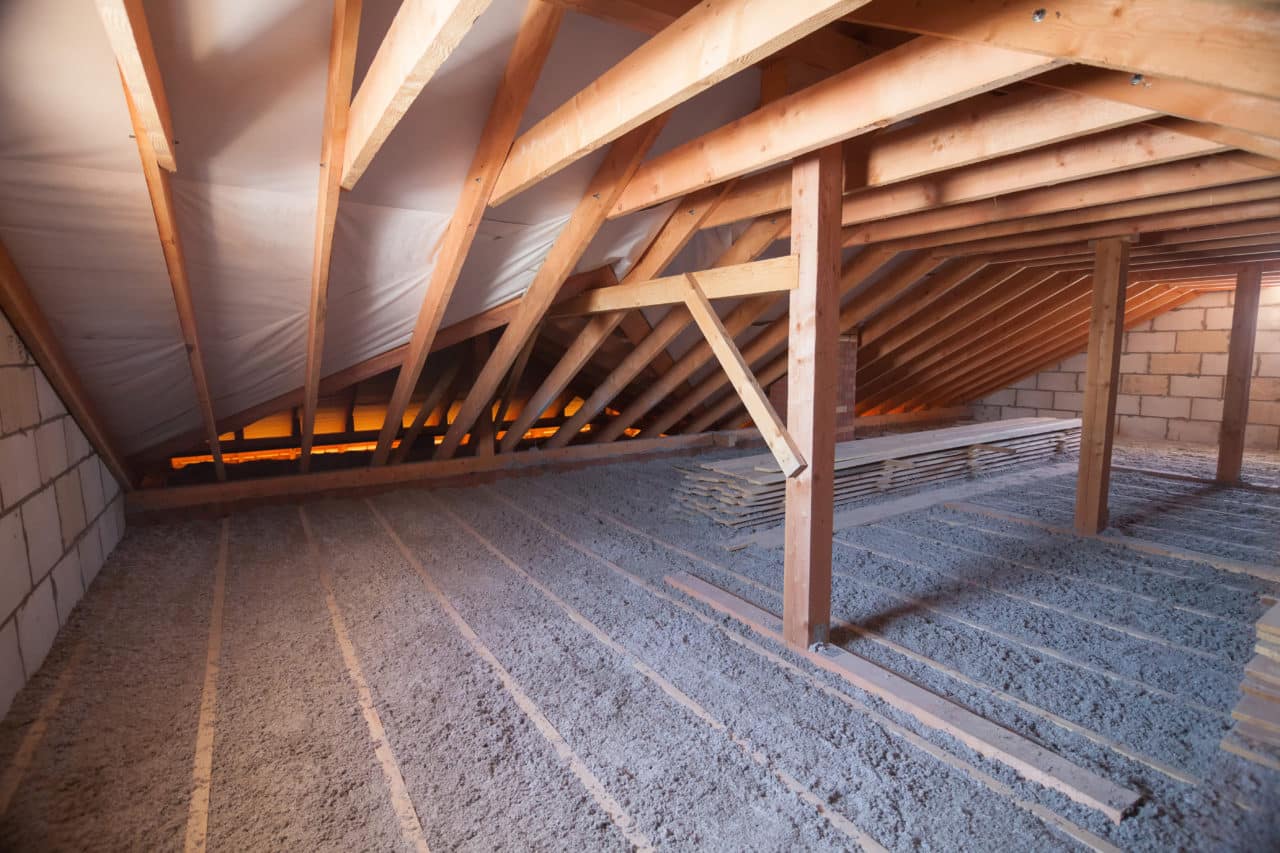The recent pandemic and the current labor shortage are causing supply chain issues and driving up the cost of construction materials. Everything from lumber and bricks to paint and roof tiles are seeing price increases, with no relief in sight. This includes the cost of insulation.
Homeowners who need to replace or add insulation to their homes are wondering how much it will cost now. It’s difficult to give a definitive answer because there are several factors that can affect the price. We want to shed some light on what variables affect the price, so you can budget for home insulation costs.
4 Types of insulation for your home
The first factor that impacts cost is the type of insulation. There are four distinct types of home insulation, each with its own set of benefits and drawbacks.
1. Blanket batts and rolls
This type of insulation is made from fiberglass, rock wool, plastic, or natural fibers. It’s available in pre-cut lengths that fit between the studs or joists in your walls, attic, or crawl space. Batt and roll insulation is easy to install (so many homeowners like to DIY this project), but it can be difficult to cut and fit around obstacles like pipes and electrical wiring.
2. Blown-in
This type of insulation is often made with recycled materials like newspaper and cardboard but can also be made of fiberglass and rock wool. It’s installed with a special machine that “blows” the insulation into your walls, attic, or crawl space. Blown-in insulation is great for hard-to-reach places and can be used to top up existing insulation. But it can be messy to install, and it’s important to ensure the area is well-sealed before starting.
3. Rigid foam boards
Rigid foam boards are made of polystyrene, polyurethane, or graphite. They’re available in different thicknesses and sizes and can be used to insulate walls, floors, ceilings, and foundations. Rigid foam boards are easy to install, but they can be pricey.
4. Spray foam
This type of insulation is made of polyurethane or other sprayable plastics. It’s sprayed onto surfaces and expands to fill in cracks and crevices. Spray foam insulation provides a tight seal that helps prevent air and moisture leaks, but it’s crucial to get the chemical ratio just right during installation. It can also be easy to over-spray and waste material — so it’s definitely a job for the pros.
When to replace your home’s insulation?
As the years pass, insulation deteriorates. The fibers break down, causing energy loss, discomfort, uneven temperatures, and longer run time on mechanical equipment — these factors together increase energy costs and decrease equipment life expectancy.
You can recognize the signs that it’s time for new insulation if:
- Your home is drafty
- You have high energy bills
- You can see or hear your HVAC equipment running more often than usual
- You have uneven temperatures in your home
- You live in an older home
Most experts recommend that you replace insulation after 15-20 years. If you live in an older home, it’s a good idea to be aware of the signals or have your insulation checked by a professional. They can tell you if it needs to be replaced and recommend the best type of insulation for your home.
Factors that can affect the cost of insulation
Aside from the type of insulation, there are several other factors that can affect the cost:
- R-value
- Home size
- Location in home
- Climate
- Labor
The first is the R-value, which measures how well a material resists heat flow. The higher the R-value, the more effective the insulation will be. Materials with a higher R-value are usually more expensive, but they’re also more effective at preventing heat loss.
Second, the size of your home will affect the cost. The larger your home, the more insulation you’ll need and the higher the price tag will be.
The third variable is the location you are adding or replacing insulation. Not every space in your house needs the same level of insulation. For example, you will probably need more insulation in your attic than in your basement.
The climate you live in will also affect how much insulation you need. Homes in colder climates will generally require more insulation than homes in warmer climates.
Finally, hiring a professional to install your insulation will add to the cost, but it’s often worth the investment. A professional will have the experience and knowledge to install the insulation and ensure it’s effective properly.
Labor costs vary throughout the country, and insulation projects can take several hours or even days to complete. Always make sure you hire someone who’s experienced and insured to do the job. Even if it costs a little more upfront, it will be worth the trouble (and expense) of having to redo shoddy workmanship down the road.
Cost of labor
Depending on the type of insulation material, installation method, and equipment used, labor costs for home insulation can vary significantly. For example, spray foam projects require special equipment and protective gear to inflate the cost per square foot.
So should you hire a professional to install your insulation or save the expense and do it yourself?
Although it may seem daunting, you can save money by installing home insulation yourself with some careful advance planning. Homeowners can usually handle batting and blown-in insulation projects, while foam board and spray insulation generally require professional assistance.
But if you’re not confident in your abilities or you don’t have the time for research, planning, and execution, it’s probably best to hire a professional. Remember that improper insulation installation can result in lower R-values, air and moisture leaks, and even health hazards.
Ready to get started on your home insulation project?
Lee Company’s team of insulation experts is here to help you choose the best insulation for your home and budget. We offer a variety of insulation types and can provide installation services for both new construction projects and existing homes. Give us a call today!
Need home insulation services?
CALL US NOW AT 615.567.1000

